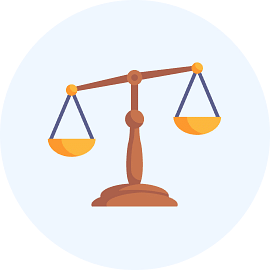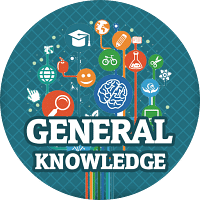CLAT Exam > CLAT Questions > Direction: Read the following passage careful...
Start Learning for Free
Direction: Read the following passage carefully and answer the questions given below:
COP15, the UN biodiversity summit held in Montreal, Canada, has come to a close with the approval of a landmark deal with the ambitious target to protect 30% of the world’s biodiversity by 2030. While the summit was heralded as the “last chance” to protect species and ecosystems from destruction, previous reports suggested progress had been slow, with parties divided on the issue of financing conservation efforts. One key issue has been how to ensure a more equitable sharing of the benefits that arise from the use of genetic resources, that is, genetic materials obtained from plants, animals and microbes. Unequal benefit sharing leads to what experts call biopiracy. As The Guardian reported, an agreement has now been made on this front to set up a funding mechanism on digital sequence information (DSI).
Firstly, benefit sharing refers to a system that aims to fairly distribute any benefits arising from the use of genetic information derived from natural resources between stakeholders — such as research organizations and biotech companies — and the countries where this biological resource is found. These genetic resources have led to various scientific breakthroughs over the years – from medicines to innovations in food and cosmetics. Technological advancements have now made it possible to digitize genetic data — digital sequence information (DSI) — and store it in online databases. This complicates the equal distribution of benefits. DSI is made freely available in public databases to be utilized as a tool for scientific innovation that benefits populations around the world. For example, conservationists have used DSI to revive populations of the California condor, the largest bird in Northern America. However, countries from Africa, Latin America and the Caribbean have previously argued that open-sourced DSI “has become a loophole for pharmaceutical companies and others to avoid sharing profits deriving from their flora, fauna…,” reported The Guardian.
[Extracted from “As the COP15 ends, biopiracy is the key issue, what is it?” by Ananya Singh, the Swaddle]
Q. What is the key issue addressed in the passage regarding the use of digital sequence information (DSI)?
- a)The need to limit access to DSI to protect genetic resources.
- b)The difficulty in digitizing genetic data.
- c)The unequal sharing of benefits arising from the use of DSI.
- d)The lack of public availability of DSI for scientific innovation.
Correct answer is option 'C'. Can you explain this answer?
| FREE This question is part of | Download PDF Attempt this Test |
Most Upvoted Answer
Direction: Read the following passage carefully and answer the questio...
The correct answer is C) The unequal sharing of benefits arising from the use of DSI. The passage discusses how the digitization of genetic data, known as DSI, has led to challenges in the equitable distribution of benefits. It mentions that open-sourced DSI has been viewed as a loophole for certain entities to avoid sharing profits derived from genetic resources, which is a key issue highlighted in the passage.
Attention CLAT Students!
To make sure you are not studying endlessly, EduRev has designed CLAT study material, with Structured Courses, Videos, & Test Series. Plus get personalized analysis, doubt solving and improvement plans to achieve a great score in CLAT.

|
Explore Courses for CLAT exam
|

|
Direction: Read the following passage carefully and answer the questions given below:COP15, the UN biodiversity summit held in Montreal, Canada, has come to a close with the approval of a landmark deal with the ambitious target to protect 30% of the world’s biodiversity by 2030. While the summit was heralded as the “last chance” to protect species and ecosystems from destruction, previous reports suggested progress had been slow, with parties divided on the issue of financing conservation efforts. One key issue has been how to ensure a more equitable sharing of the benefits that arise from the use of genetic resources, that is, genetic materials obtained from plants, animals and microbes. Unequal benefit sharing leads to what experts call biopiracy. As The Guardian reported, an agreement has now been made on this front to set up a funding mechanism on digital sequence information (DSI).Firstly, benefit sharing refers to a system that aims to fairly distribute any benefits arising from the use of genetic information derived from natural resources between stakeholders — such as research organizations and biotech companies — and the countries where this biological resource is found. These genetic resources have led to various scientific breakthroughs over the years – from medicines to innovations in food and cosmetics. Technological advancements have now made it possible to digitize genetic data — digital sequence information (DSI) — and store it in online databases. This complicates the equal distribution of benefits. DSI is made freely available in public databases to be utilized as a tool for scientific innovation that benefits populations around the world. For example, conservationists have used DSI to revive populations of the California condor, the largest bird in Northern America. However, countries from Africa, Latin America and the Caribbean have previously argued that open-sourced DSI “has become a loophole for pharmaceutical companies and others to avoid sharing profits deriving from their flora, fauna…,” reported The Guardian.[Extracted from “As the COP15 ends, biopiracy is the key issue, what is it?” by Ananya Singh, the Swaddle]Q.What is the key issue addressed in the passage regarding the use of digital sequence information (DSI)?a)The need to limit access to DSI to protect genetic resources.b)The difficulty in digitizing genetic data.c)The unequal sharing of benefits arising from the use of DSI.d)The lack of public availability of DSI for scientific innovation.Correct answer is option 'C'. Can you explain this answer?
Question Description
Direction: Read the following passage carefully and answer the questions given below:COP15, the UN biodiversity summit held in Montreal, Canada, has come to a close with the approval of a landmark deal with the ambitious target to protect 30% of the world’s biodiversity by 2030. While the summit was heralded as the “last chance” to protect species and ecosystems from destruction, previous reports suggested progress had been slow, with parties divided on the issue of financing conservation efforts. One key issue has been how to ensure a more equitable sharing of the benefits that arise from the use of genetic resources, that is, genetic materials obtained from plants, animals and microbes. Unequal benefit sharing leads to what experts call biopiracy. As The Guardian reported, an agreement has now been made on this front to set up a funding mechanism on digital sequence information (DSI).Firstly, benefit sharing refers to a system that aims to fairly distribute any benefits arising from the use of genetic information derived from natural resources between stakeholders — such as research organizations and biotech companies — and the countries where this biological resource is found. These genetic resources have led to various scientific breakthroughs over the years – from medicines to innovations in food and cosmetics. Technological advancements have now made it possible to digitize genetic data — digital sequence information (DSI) — and store it in online databases. This complicates the equal distribution of benefits. DSI is made freely available in public databases to be utilized as a tool for scientific innovation that benefits populations around the world. For example, conservationists have used DSI to revive populations of the California condor, the largest bird in Northern America. However, countries from Africa, Latin America and the Caribbean have previously argued that open-sourced DSI “has become a loophole for pharmaceutical companies and others to avoid sharing profits deriving from their flora, fauna…,” reported The Guardian.[Extracted from “As the COP15 ends, biopiracy is the key issue, what is it?” by Ananya Singh, the Swaddle]Q.What is the key issue addressed in the passage regarding the use of digital sequence information (DSI)?a)The need to limit access to DSI to protect genetic resources.b)The difficulty in digitizing genetic data.c)The unequal sharing of benefits arising from the use of DSI.d)The lack of public availability of DSI for scientific innovation.Correct answer is option 'C'. Can you explain this answer? for CLAT 2024 is part of CLAT preparation. The Question and answers have been prepared according to the CLAT exam syllabus. Information about Direction: Read the following passage carefully and answer the questions given below:COP15, the UN biodiversity summit held in Montreal, Canada, has come to a close with the approval of a landmark deal with the ambitious target to protect 30% of the world’s biodiversity by 2030. While the summit was heralded as the “last chance” to protect species and ecosystems from destruction, previous reports suggested progress had been slow, with parties divided on the issue of financing conservation efforts. One key issue has been how to ensure a more equitable sharing of the benefits that arise from the use of genetic resources, that is, genetic materials obtained from plants, animals and microbes. Unequal benefit sharing leads to what experts call biopiracy. As The Guardian reported, an agreement has now been made on this front to set up a funding mechanism on digital sequence information (DSI).Firstly, benefit sharing refers to a system that aims to fairly distribute any benefits arising from the use of genetic information derived from natural resources between stakeholders — such as research organizations and biotech companies — and the countries where this biological resource is found. These genetic resources have led to various scientific breakthroughs over the years – from medicines to innovations in food and cosmetics. Technological advancements have now made it possible to digitize genetic data — digital sequence information (DSI) — and store it in online databases. This complicates the equal distribution of benefits. DSI is made freely available in public databases to be utilized as a tool for scientific innovation that benefits populations around the world. For example, conservationists have used DSI to revive populations of the California condor, the largest bird in Northern America. However, countries from Africa, Latin America and the Caribbean have previously argued that open-sourced DSI “has become a loophole for pharmaceutical companies and others to avoid sharing profits deriving from their flora, fauna…,” reported The Guardian.[Extracted from “As the COP15 ends, biopiracy is the key issue, what is it?” by Ananya Singh, the Swaddle]Q.What is the key issue addressed in the passage regarding the use of digital sequence information (DSI)?a)The need to limit access to DSI to protect genetic resources.b)The difficulty in digitizing genetic data.c)The unequal sharing of benefits arising from the use of DSI.d)The lack of public availability of DSI for scientific innovation.Correct answer is option 'C'. Can you explain this answer? covers all topics & solutions for CLAT 2024 Exam. Find important definitions, questions, meanings, examples, exercises and tests below for Direction: Read the following passage carefully and answer the questions given below:COP15, the UN biodiversity summit held in Montreal, Canada, has come to a close with the approval of a landmark deal with the ambitious target to protect 30% of the world’s biodiversity by 2030. While the summit was heralded as the “last chance” to protect species and ecosystems from destruction, previous reports suggested progress had been slow, with parties divided on the issue of financing conservation efforts. One key issue has been how to ensure a more equitable sharing of the benefits that arise from the use of genetic resources, that is, genetic materials obtained from plants, animals and microbes. Unequal benefit sharing leads to what experts call biopiracy. As The Guardian reported, an agreement has now been made on this front to set up a funding mechanism on digital sequence information (DSI).Firstly, benefit sharing refers to a system that aims to fairly distribute any benefits arising from the use of genetic information derived from natural resources between stakeholders — such as research organizations and biotech companies — and the countries where this biological resource is found. These genetic resources have led to various scientific breakthroughs over the years – from medicines to innovations in food and cosmetics. Technological advancements have now made it possible to digitize genetic data — digital sequence information (DSI) — and store it in online databases. This complicates the equal distribution of benefits. DSI is made freely available in public databases to be utilized as a tool for scientific innovation that benefits populations around the world. For example, conservationists have used DSI to revive populations of the California condor, the largest bird in Northern America. However, countries from Africa, Latin America and the Caribbean have previously argued that open-sourced DSI “has become a loophole for pharmaceutical companies and others to avoid sharing profits deriving from their flora, fauna…,” reported The Guardian.[Extracted from “As the COP15 ends, biopiracy is the key issue, what is it?” by Ananya Singh, the Swaddle]Q.What is the key issue addressed in the passage regarding the use of digital sequence information (DSI)?a)The need to limit access to DSI to protect genetic resources.b)The difficulty in digitizing genetic data.c)The unequal sharing of benefits arising from the use of DSI.d)The lack of public availability of DSI for scientific innovation.Correct answer is option 'C'. Can you explain this answer?.
Direction: Read the following passage carefully and answer the questions given below:COP15, the UN biodiversity summit held in Montreal, Canada, has come to a close with the approval of a landmark deal with the ambitious target to protect 30% of the world’s biodiversity by 2030. While the summit was heralded as the “last chance” to protect species and ecosystems from destruction, previous reports suggested progress had been slow, with parties divided on the issue of financing conservation efforts. One key issue has been how to ensure a more equitable sharing of the benefits that arise from the use of genetic resources, that is, genetic materials obtained from plants, animals and microbes. Unequal benefit sharing leads to what experts call biopiracy. As The Guardian reported, an agreement has now been made on this front to set up a funding mechanism on digital sequence information (DSI).Firstly, benefit sharing refers to a system that aims to fairly distribute any benefits arising from the use of genetic information derived from natural resources between stakeholders — such as research organizations and biotech companies — and the countries where this biological resource is found. These genetic resources have led to various scientific breakthroughs over the years – from medicines to innovations in food and cosmetics. Technological advancements have now made it possible to digitize genetic data — digital sequence information (DSI) — and store it in online databases. This complicates the equal distribution of benefits. DSI is made freely available in public databases to be utilized as a tool for scientific innovation that benefits populations around the world. For example, conservationists have used DSI to revive populations of the California condor, the largest bird in Northern America. However, countries from Africa, Latin America and the Caribbean have previously argued that open-sourced DSI “has become a loophole for pharmaceutical companies and others to avoid sharing profits deriving from their flora, fauna…,” reported The Guardian.[Extracted from “As the COP15 ends, biopiracy is the key issue, what is it?” by Ananya Singh, the Swaddle]Q.What is the key issue addressed in the passage regarding the use of digital sequence information (DSI)?a)The need to limit access to DSI to protect genetic resources.b)The difficulty in digitizing genetic data.c)The unequal sharing of benefits arising from the use of DSI.d)The lack of public availability of DSI for scientific innovation.Correct answer is option 'C'. Can you explain this answer? for CLAT 2024 is part of CLAT preparation. The Question and answers have been prepared according to the CLAT exam syllabus. Information about Direction: Read the following passage carefully and answer the questions given below:COP15, the UN biodiversity summit held in Montreal, Canada, has come to a close with the approval of a landmark deal with the ambitious target to protect 30% of the world’s biodiversity by 2030. While the summit was heralded as the “last chance” to protect species and ecosystems from destruction, previous reports suggested progress had been slow, with parties divided on the issue of financing conservation efforts. One key issue has been how to ensure a more equitable sharing of the benefits that arise from the use of genetic resources, that is, genetic materials obtained from plants, animals and microbes. Unequal benefit sharing leads to what experts call biopiracy. As The Guardian reported, an agreement has now been made on this front to set up a funding mechanism on digital sequence information (DSI).Firstly, benefit sharing refers to a system that aims to fairly distribute any benefits arising from the use of genetic information derived from natural resources between stakeholders — such as research organizations and biotech companies — and the countries where this biological resource is found. These genetic resources have led to various scientific breakthroughs over the years – from medicines to innovations in food and cosmetics. Technological advancements have now made it possible to digitize genetic data — digital sequence information (DSI) — and store it in online databases. This complicates the equal distribution of benefits. DSI is made freely available in public databases to be utilized as a tool for scientific innovation that benefits populations around the world. For example, conservationists have used DSI to revive populations of the California condor, the largest bird in Northern America. However, countries from Africa, Latin America and the Caribbean have previously argued that open-sourced DSI “has become a loophole for pharmaceutical companies and others to avoid sharing profits deriving from their flora, fauna…,” reported The Guardian.[Extracted from “As the COP15 ends, biopiracy is the key issue, what is it?” by Ananya Singh, the Swaddle]Q.What is the key issue addressed in the passage regarding the use of digital sequence information (DSI)?a)The need to limit access to DSI to protect genetic resources.b)The difficulty in digitizing genetic data.c)The unequal sharing of benefits arising from the use of DSI.d)The lack of public availability of DSI for scientific innovation.Correct answer is option 'C'. Can you explain this answer? covers all topics & solutions for CLAT 2024 Exam. Find important definitions, questions, meanings, examples, exercises and tests below for Direction: Read the following passage carefully and answer the questions given below:COP15, the UN biodiversity summit held in Montreal, Canada, has come to a close with the approval of a landmark deal with the ambitious target to protect 30% of the world’s biodiversity by 2030. While the summit was heralded as the “last chance” to protect species and ecosystems from destruction, previous reports suggested progress had been slow, with parties divided on the issue of financing conservation efforts. One key issue has been how to ensure a more equitable sharing of the benefits that arise from the use of genetic resources, that is, genetic materials obtained from plants, animals and microbes. Unequal benefit sharing leads to what experts call biopiracy. As The Guardian reported, an agreement has now been made on this front to set up a funding mechanism on digital sequence information (DSI).Firstly, benefit sharing refers to a system that aims to fairly distribute any benefits arising from the use of genetic information derived from natural resources between stakeholders — such as research organizations and biotech companies — and the countries where this biological resource is found. These genetic resources have led to various scientific breakthroughs over the years – from medicines to innovations in food and cosmetics. Technological advancements have now made it possible to digitize genetic data — digital sequence information (DSI) — and store it in online databases. This complicates the equal distribution of benefits. DSI is made freely available in public databases to be utilized as a tool for scientific innovation that benefits populations around the world. For example, conservationists have used DSI to revive populations of the California condor, the largest bird in Northern America. However, countries from Africa, Latin America and the Caribbean have previously argued that open-sourced DSI “has become a loophole for pharmaceutical companies and others to avoid sharing profits deriving from their flora, fauna…,” reported The Guardian.[Extracted from “As the COP15 ends, biopiracy is the key issue, what is it?” by Ananya Singh, the Swaddle]Q.What is the key issue addressed in the passage regarding the use of digital sequence information (DSI)?a)The need to limit access to DSI to protect genetic resources.b)The difficulty in digitizing genetic data.c)The unequal sharing of benefits arising from the use of DSI.d)The lack of public availability of DSI for scientific innovation.Correct answer is option 'C'. Can you explain this answer?.
Solutions for Direction: Read the following passage carefully and answer the questions given below:COP15, the UN biodiversity summit held in Montreal, Canada, has come to a close with the approval of a landmark deal with the ambitious target to protect 30% of the world’s biodiversity by 2030. While the summit was heralded as the “last chance” to protect species and ecosystems from destruction, previous reports suggested progress had been slow, with parties divided on the issue of financing conservation efforts. One key issue has been how to ensure a more equitable sharing of the benefits that arise from the use of genetic resources, that is, genetic materials obtained from plants, animals and microbes. Unequal benefit sharing leads to what experts call biopiracy. As The Guardian reported, an agreement has now been made on this front to set up a funding mechanism on digital sequence information (DSI).Firstly, benefit sharing refers to a system that aims to fairly distribute any benefits arising from the use of genetic information derived from natural resources between stakeholders — such as research organizations and biotech companies — and the countries where this biological resource is found. These genetic resources have led to various scientific breakthroughs over the years – from medicines to innovations in food and cosmetics. Technological advancements have now made it possible to digitize genetic data — digital sequence information (DSI) — and store it in online databases. This complicates the equal distribution of benefits. DSI is made freely available in public databases to be utilized as a tool for scientific innovation that benefits populations around the world. For example, conservationists have used DSI to revive populations of the California condor, the largest bird in Northern America. However, countries from Africa, Latin America and the Caribbean have previously argued that open-sourced DSI “has become a loophole for pharmaceutical companies and others to avoid sharing profits deriving from their flora, fauna…,” reported The Guardian.[Extracted from “As the COP15 ends, biopiracy is the key issue, what is it?” by Ananya Singh, the Swaddle]Q.What is the key issue addressed in the passage regarding the use of digital sequence information (DSI)?a)The need to limit access to DSI to protect genetic resources.b)The difficulty in digitizing genetic data.c)The unequal sharing of benefits arising from the use of DSI.d)The lack of public availability of DSI for scientific innovation.Correct answer is option 'C'. Can you explain this answer? in English & in Hindi are available as part of our courses for CLAT.
Download more important topics, notes, lectures and mock test series for CLAT Exam by signing up for free.
Here you can find the meaning of Direction: Read the following passage carefully and answer the questions given below:COP15, the UN biodiversity summit held in Montreal, Canada, has come to a close with the approval of a landmark deal with the ambitious target to protect 30% of the world’s biodiversity by 2030. While the summit was heralded as the “last chance” to protect species and ecosystems from destruction, previous reports suggested progress had been slow, with parties divided on the issue of financing conservation efforts. One key issue has been how to ensure a more equitable sharing of the benefits that arise from the use of genetic resources, that is, genetic materials obtained from plants, animals and microbes. Unequal benefit sharing leads to what experts call biopiracy. As The Guardian reported, an agreement has now been made on this front to set up a funding mechanism on digital sequence information (DSI).Firstly, benefit sharing refers to a system that aims to fairly distribute any benefits arising from the use of genetic information derived from natural resources between stakeholders — such as research organizations and biotech companies — and the countries where this biological resource is found. These genetic resources have led to various scientific breakthroughs over the years – from medicines to innovations in food and cosmetics. Technological advancements have now made it possible to digitize genetic data — digital sequence information (DSI) — and store it in online databases. This complicates the equal distribution of benefits. DSI is made freely available in public databases to be utilized as a tool for scientific innovation that benefits populations around the world. For example, conservationists have used DSI to revive populations of the California condor, the largest bird in Northern America. However, countries from Africa, Latin America and the Caribbean have previously argued that open-sourced DSI “has become a loophole for pharmaceutical companies and others to avoid sharing profits deriving from their flora, fauna…,” reported The Guardian.[Extracted from “As the COP15 ends, biopiracy is the key issue, what is it?” by Ananya Singh, the Swaddle]Q.What is the key issue addressed in the passage regarding the use of digital sequence information (DSI)?a)The need to limit access to DSI to protect genetic resources.b)The difficulty in digitizing genetic data.c)The unequal sharing of benefits arising from the use of DSI.d)The lack of public availability of DSI for scientific innovation.Correct answer is option 'C'. Can you explain this answer? defined & explained in the simplest way possible. Besides giving the explanation of
Direction: Read the following passage carefully and answer the questions given below:COP15, the UN biodiversity summit held in Montreal, Canada, has come to a close with the approval of a landmark deal with the ambitious target to protect 30% of the world’s biodiversity by 2030. While the summit was heralded as the “last chance” to protect species and ecosystems from destruction, previous reports suggested progress had been slow, with parties divided on the issue of financing conservation efforts. One key issue has been how to ensure a more equitable sharing of the benefits that arise from the use of genetic resources, that is, genetic materials obtained from plants, animals and microbes. Unequal benefit sharing leads to what experts call biopiracy. As The Guardian reported, an agreement has now been made on this front to set up a funding mechanism on digital sequence information (DSI).Firstly, benefit sharing refers to a system that aims to fairly distribute any benefits arising from the use of genetic information derived from natural resources between stakeholders — such as research organizations and biotech companies — and the countries where this biological resource is found. These genetic resources have led to various scientific breakthroughs over the years – from medicines to innovations in food and cosmetics. Technological advancements have now made it possible to digitize genetic data — digital sequence information (DSI) — and store it in online databases. This complicates the equal distribution of benefits. DSI is made freely available in public databases to be utilized as a tool for scientific innovation that benefits populations around the world. For example, conservationists have used DSI to revive populations of the California condor, the largest bird in Northern America. However, countries from Africa, Latin America and the Caribbean have previously argued that open-sourced DSI “has become a loophole for pharmaceutical companies and others to avoid sharing profits deriving from their flora, fauna…,” reported The Guardian.[Extracted from “As the COP15 ends, biopiracy is the key issue, what is it?” by Ananya Singh, the Swaddle]Q.What is the key issue addressed in the passage regarding the use of digital sequence information (DSI)?a)The need to limit access to DSI to protect genetic resources.b)The difficulty in digitizing genetic data.c)The unequal sharing of benefits arising from the use of DSI.d)The lack of public availability of DSI for scientific innovation.Correct answer is option 'C'. Can you explain this answer?, a detailed solution for Direction: Read the following passage carefully and answer the questions given below:COP15, the UN biodiversity summit held in Montreal, Canada, has come to a close with the approval of a landmark deal with the ambitious target to protect 30% of the world’s biodiversity by 2030. While the summit was heralded as the “last chance” to protect species and ecosystems from destruction, previous reports suggested progress had been slow, with parties divided on the issue of financing conservation efforts. One key issue has been how to ensure a more equitable sharing of the benefits that arise from the use of genetic resources, that is, genetic materials obtained from plants, animals and microbes. Unequal benefit sharing leads to what experts call biopiracy. As The Guardian reported, an agreement has now been made on this front to set up a funding mechanism on digital sequence information (DSI).Firstly, benefit sharing refers to a system that aims to fairly distribute any benefits arising from the use of genetic information derived from natural resources between stakeholders — such as research organizations and biotech companies — and the countries where this biological resource is found. These genetic resources have led to various scientific breakthroughs over the years – from medicines to innovations in food and cosmetics. Technological advancements have now made it possible to digitize genetic data — digital sequence information (DSI) — and store it in online databases. This complicates the equal distribution of benefits. DSI is made freely available in public databases to be utilized as a tool for scientific innovation that benefits populations around the world. For example, conservationists have used DSI to revive populations of the California condor, the largest bird in Northern America. However, countries from Africa, Latin America and the Caribbean have previously argued that open-sourced DSI “has become a loophole for pharmaceutical companies and others to avoid sharing profits deriving from their flora, fauna…,” reported The Guardian.[Extracted from “As the COP15 ends, biopiracy is the key issue, what is it?” by Ananya Singh, the Swaddle]Q.What is the key issue addressed in the passage regarding the use of digital sequence information (DSI)?a)The need to limit access to DSI to protect genetic resources.b)The difficulty in digitizing genetic data.c)The unequal sharing of benefits arising from the use of DSI.d)The lack of public availability of DSI for scientific innovation.Correct answer is option 'C'. Can you explain this answer? has been provided alongside types of Direction: Read the following passage carefully and answer the questions given below:COP15, the UN biodiversity summit held in Montreal, Canada, has come to a close with the approval of a landmark deal with the ambitious target to protect 30% of the world’s biodiversity by 2030. While the summit was heralded as the “last chance” to protect species and ecosystems from destruction, previous reports suggested progress had been slow, with parties divided on the issue of financing conservation efforts. One key issue has been how to ensure a more equitable sharing of the benefits that arise from the use of genetic resources, that is, genetic materials obtained from plants, animals and microbes. Unequal benefit sharing leads to what experts call biopiracy. As The Guardian reported, an agreement has now been made on this front to set up a funding mechanism on digital sequence information (DSI).Firstly, benefit sharing refers to a system that aims to fairly distribute any benefits arising from the use of genetic information derived from natural resources between stakeholders — such as research organizations and biotech companies — and the countries where this biological resource is found. These genetic resources have led to various scientific breakthroughs over the years – from medicines to innovations in food and cosmetics. Technological advancements have now made it possible to digitize genetic data — digital sequence information (DSI) — and store it in online databases. This complicates the equal distribution of benefits. DSI is made freely available in public databases to be utilized as a tool for scientific innovation that benefits populations around the world. For example, conservationists have used DSI to revive populations of the California condor, the largest bird in Northern America. However, countries from Africa, Latin America and the Caribbean have previously argued that open-sourced DSI “has become a loophole for pharmaceutical companies and others to avoid sharing profits deriving from their flora, fauna…,” reported The Guardian.[Extracted from “As the COP15 ends, biopiracy is the key issue, what is it?” by Ananya Singh, the Swaddle]Q.What is the key issue addressed in the passage regarding the use of digital sequence information (DSI)?a)The need to limit access to DSI to protect genetic resources.b)The difficulty in digitizing genetic data.c)The unequal sharing of benefits arising from the use of DSI.d)The lack of public availability of DSI for scientific innovation.Correct answer is option 'C'. Can you explain this answer? theory, EduRev gives you an
ample number of questions to practice Direction: Read the following passage carefully and answer the questions given below:COP15, the UN biodiversity summit held in Montreal, Canada, has come to a close with the approval of a landmark deal with the ambitious target to protect 30% of the world’s biodiversity by 2030. While the summit was heralded as the “last chance” to protect species and ecosystems from destruction, previous reports suggested progress had been slow, with parties divided on the issue of financing conservation efforts. One key issue has been how to ensure a more equitable sharing of the benefits that arise from the use of genetic resources, that is, genetic materials obtained from plants, animals and microbes. Unequal benefit sharing leads to what experts call biopiracy. As The Guardian reported, an agreement has now been made on this front to set up a funding mechanism on digital sequence information (DSI).Firstly, benefit sharing refers to a system that aims to fairly distribute any benefits arising from the use of genetic information derived from natural resources between stakeholders — such as research organizations and biotech companies — and the countries where this biological resource is found. These genetic resources have led to various scientific breakthroughs over the years – from medicines to innovations in food and cosmetics. Technological advancements have now made it possible to digitize genetic data — digital sequence information (DSI) — and store it in online databases. This complicates the equal distribution of benefits. DSI is made freely available in public databases to be utilized as a tool for scientific innovation that benefits populations around the world. For example, conservationists have used DSI to revive populations of the California condor, the largest bird in Northern America. However, countries from Africa, Latin America and the Caribbean have previously argued that open-sourced DSI “has become a loophole for pharmaceutical companies and others to avoid sharing profits deriving from their flora, fauna…,” reported The Guardian.[Extracted from “As the COP15 ends, biopiracy is the key issue, what is it?” by Ananya Singh, the Swaddle]Q.What is the key issue addressed in the passage regarding the use of digital sequence information (DSI)?a)The need to limit access to DSI to protect genetic resources.b)The difficulty in digitizing genetic data.c)The unequal sharing of benefits arising from the use of DSI.d)The lack of public availability of DSI for scientific innovation.Correct answer is option 'C'. Can you explain this answer? tests, examples and also practice CLAT tests.

|
Explore Courses for CLAT exam
|

|
Suggested Free Tests
Signup for Free!
Signup to see your scores go up within 7 days! Learn & Practice with 1000+ FREE Notes, Videos & Tests.






















